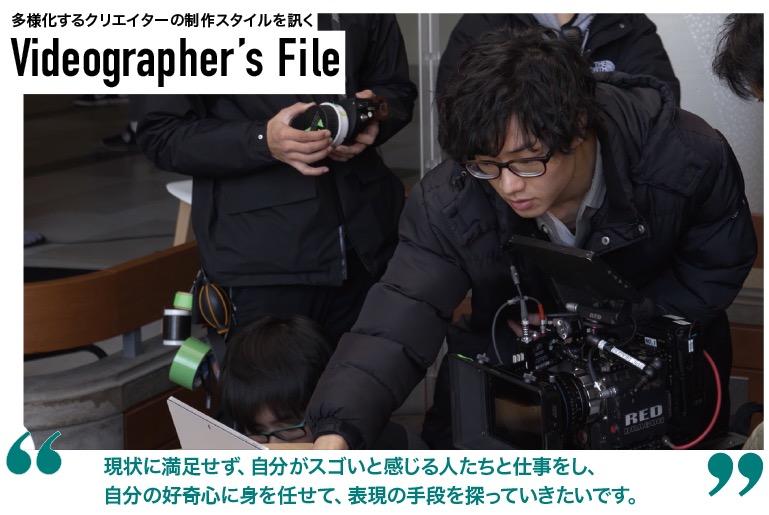"Videographer's File" asking about the production styles of diversifying video creators Takaya Ohata
Takaya Ohata
Video director / cameraman. He majored in filmmaking at Osaka University of Arts. After that, he started independent production of music videos based in Kansai. After he moved to Tokyo, he joined isai Co., Ltd. He is currently working mainly on music videos and web commercials.
WEB ● http://isai-inc.co.jp/https://www.takayaohata.com/
Interview / text ● Yoshie Matsuoka
Works by Takaya Ohata
At a meeting with the label, I had the idea of projecting a projector and shooting in a studio in White Hori, and I assembled the composition from there. In addition to being a director, Mr. Ohata is also in charge of shooting.
Mr. Ohata is a director-oriented work with a story-style composition that depicts the mischief of the devil. He said he had a hard time finding a location because he was looking for a situation with four rooms on one floor.

As a result, movie lovers are on the path to video
Takaya Ohata belongs to the video production company isai. He mainly works on music videos and web commercials. She asked her how she started her footage.
"I loved movies very much. When I was in high school, I used to take pictures of my everyday life with my friends with my mobile phone camera. After that, my smartphone came out and I added music to the videos I took. I was getting cramped to make videos only on my smartphone, so when I was in the second year of high school, I worked part-time at an amusement park, saved money, and bought an iMac. I imported it to my iMac and edited it (laughs). "
She said that at Osaka University of Arts, where she went on to school, she also practiced film shooting and made videos by spending her own budget. "There was a compulsory lesson to shoot a short film of about 10 minutes on 16mm film. Like shooting an actual movie, I gathered the people myself and formed a team to make it. That is the basic physical strength now. I think it's also
What made you want to shoot the music video that is the current main battlefield?
"A senior who was making music told me that video tools are indispensable for crossing idols with different genres such as EDM and hardcore and instilling such things. Now with isai. I bought the EOS 5D Mark II, so I decided to take a picture. I took a picture in a small studio. This was my first time, but the digital single-lens is pretty cool. (Laughs). Since then, I talked to indie bands and acquaintances in Osaka and shot half of them with the feeling of practicing. Not only the director but also I like the equipment, so I shot. Was there. "
I asked him what the criteria for selecting equipment are.
"When I shoot, I choose what I can handle, but my favorite camera is the FS7. I use URSA Mini Pro when I can create lighting properly."
In the field, he often turns the camera in addition to the production, but he said that he concentrated on the production in the MV of "No.999" by go! Go! Vanillas.
"It was a project I put out myself, but it was very difficult. I was surprised myself (laughs). Not only the set, but also the budget and shooting time were greatly pushed. But I was particular about the color of the lighting. I was very happy that I was able to work in collaboration with various people because it was a luxury job to just direct. "
Frequently used cameras are Sony FS7, α7S II, and Blackmagic Design URSA Mini Pro (others are also available for rental). MVs and WEB CMs often use cinema cameras. A video camera is also used for live shooting. In the MV, you can use the old lens with the coating removed (second photo) to give the look a personality, or hold a colored filter or crystal prisms of various shapes (third photo) in front of the lens. Also pay attention to flare expression. In addition, the SHOGUN INFERNO is equipped with a SmallRig cage and a V-mount battery adapter so that it can be used for a long time (4th photo).
▲ The making scene of the drama scene in the music video. Even if the project requires a lot of scenes, we will shoot at once with a small number of people.
● Reprinted from the July 2019 issue of Video SALON
 notebook-laptop
notebook-laptop






